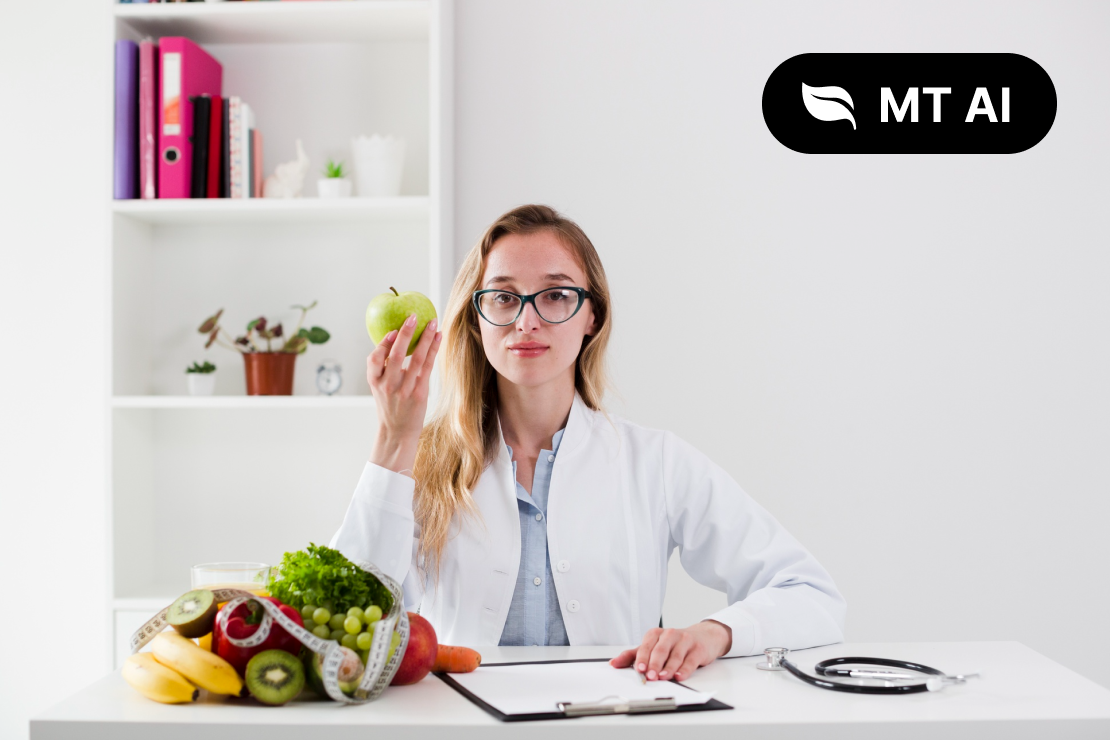The Evolution of Macro Tracking: How AI is Leading the Way
Explore the journey from paper food diaries to AI-powered nutrition tracking. Discover how artificial intelligence is revolutionizing the way we monitor and optimize our nutrition for better health outcomes.

Table of Content
The Journey from Paper to Pixels
The history of macro tracking is a testament to human innovation in pursuit of better health. What began as simple paper food diaries has evolved through multiple technological revolutions to become the sophisticated AI-powered systems we have today. This evolution reflects not just technological advancement, but a deeper understanding of human nutrition and the complex relationship between food and health.
The Early Days of Nutrition Tracking
Before the digital age, nutrition tracking was a manual, time-consuming process that required dedication and meticulous attention to detail. Nutritionists and health enthusiasts relied on handwritten food diaries, calorie counting books, and basic mathematical calculations to monitor their intake. This era, while foundational to our understanding of nutrition tracking, was limited by human error, inconsistency, and the sheer effort required to maintain accurate records.
Historical Milestones in Macro Tracking
Let's trace the key developments that shaped modern nutrition tracking:
- 1960s-1980s: Paper food diaries and basic calorie counting books
- 1990s: First digital calculators and spreadsheet tracking systems
- 2000s: Mobile apps with manual logging capabilities
- 2010s: Cloud-based tracking with social features and databases
- 2015s: Introduction of photo-based food recognition
- 2020s: AI-powered recognition and personalization
- 2025s: Advanced AI with predictive analytics and real-time adaptation
The Digital Revolution in Nutrition
The transition from paper to digital tracking marked the first major revolution in macro monitoring. Digital tools introduced unprecedented accuracy and convenience, but they still relied heavily on manual input and generic calculations. This era saw the emergence of the first nutrition apps, which, while revolutionary for their time, were essentially digital versions of paper logs.
Early digital tracking solutions brought several key improvements:
- Digital food databases with standardized measurements
- Automated calorie and macro calculations
- Basic progress tracking and reporting
- Simplified data entry and storage
- Initial attempts at portion size estimation
- Basic meal planning features
- Rudimentary goal setting capabilities
The AI Breakthrough
Artificial intelligence has fundamentally changed how we approach nutrition tracking. Unlike traditional digital tools, AI-powered systems like Macro Tracking AI can understand context, learn from patterns, and provide personalized recommendations. This intelligence transforms the tracking experience from a tedious chore into an intuitive, educational journey.
The integration of AI has revolutionized several key aspects of nutrition tracking:
Key AI Innovations
The integration of AI has brought several groundbreaking capabilities to macro tracking:
- Real-time food recognition through advanced computer vision
- Personalized macro recommendations based on individual response
- Predictive analysis for goal achievement and potential obstacles
- Adaptive learning from user behavior patterns and preferences
- Contextual understanding of eating situations and environments
- Integration with wearable devices and health monitors
- Advanced pattern recognition for nutrition optimization
Beyond Simple Tracking
Modern AI-powered tracking goes far beyond counting calories and macros. These systems understand the nuances of nutrition, considering factors like meal timing, food combinations, and individual metabolic responses. This comprehensive approach provides insights that were impossible with traditional tracking methods.
Advanced Analysis Capabilities
Today's AI systems can process and analyze nutrition data in ways that revolutionize personal health management. They can identify patterns in eating habits, predict potential nutritional deficiencies, and suggest proactive adjustments to optimize health outcomes. This level of analysis transforms tracking from a retrospective record into a forward-looking health optimization tool.
The Role of Machine Learning
Machine learning algorithms form the backbone of modern macro tracking systems. These algorithms continuously learn from user interactions, improving their accuracy and personalization capabilities over time. The more you use the system, the better it understands your unique nutritional needs and preferences. This adaptive learning capability represents a fundamental shift from static tracking tools to dynamic nutrition partners.
Learning Mechanisms
The sophisticated learning capabilities of modern tracking systems include:
- Pattern recognition in eating habits and timing
- Individual response analysis to different foods and combinations
- Adaptation to changing health goals and circumstances
- Recognition of seasonal and cultural preferences
- Understanding of personal taste preferences and aversions
- Analysis of stress and emotional eating patterns
- Learning from successful user strategies and outcomes
Real-World Impact
The evolution of macro tracking has had profound effects on how people approach nutrition and health. AI-powered systems have made precise nutrition tracking accessible to everyone, not just health professionals and dedicated enthusiasts. This democratization of nutrition knowledge has empowered millions to take control of their health through informed food choices.
The Future of Macro Tracking
As we look to the future, the potential for further innovation in macro tracking is enormous. Emerging technologies like augmented reality, advanced biosensors, and even more sophisticated AI algorithms promise to make nutrition tracking even more intuitive and effective. These developments will continue to push the boundaries of what's possible in personal nutrition management.
Emerging Technologies
The next wave of innovations in macro tracking may include:
- Real-time nutritional analysis through advanced wearable devices
- Integration with smart kitchen appliances and cooking systems
- Augmented reality nutrition guidance and shopping assistance
- Genetic and microbiome-based personalized recommendations
- Advanced metabolic response prediction and optimization
- Neural network-powered meal planning and optimization
- Integrated health ecosystem coordination
The Impact on Health Outcomes
The advancement in macro tracking technology has led to measurable improvements in health outcomes. Users of AI-powered tracking systems report better adherence to nutrition goals, more sustainable lifestyle changes, and improved understanding of their body's unique needs. This technology has become an invaluable tool in the fight against obesity, metabolic disorders, and other nutrition-related health challenges.
Conclusion
The evolution of macro tracking from paper diaries to AI-powered systems represents more than just technological progress – it's a revolution in how we understand and manage our nutrition. As AI continues to advance, we can expect even more sophisticated and personalized approaches to nutrition tracking. The future of macro tracking is not just about counting nutrients; it's about creating a comprehensive understanding of individual nutrition needs and providing the tools to meet them effectively.
Looking ahead, the continued evolution of AI in nutrition tracking promises to bring even more revolutionary changes to how we approach health and wellness. As these systems become more sophisticated and accessible, they will play an increasingly crucial role in helping individuals achieve their health goals and maintain optimal nutrition throughout their lives.
Start Your Health Journey Today
Download Macro Tracking AI and take control of your nutrition with the power of artificial intelligence.
Download on App Store

